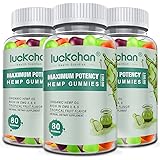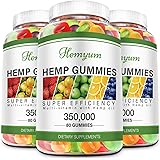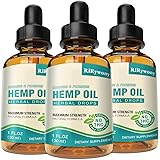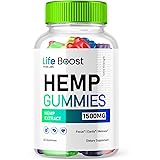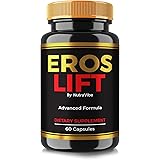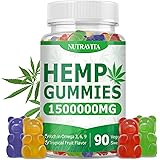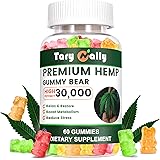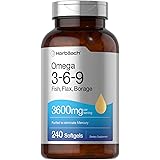The burgeoning interest in cannabinoid therapeutics has led to a remarkable diversification of products, with consumers increasingly seeking formulations that promise enhanced efficacy. For those navigating the complex landscape of cannabis-derived compounds, understanding the nuances of potency and delivery methods is paramount. The video above delves into a firsthand account of testing an exceptionally potent CBD oil, offering a candid glimpse into its subjective effects and overall utility.
This exploration moves beyond casual use, focusing on a robust 12,000mg CBD oil designed to deliver substantial cannabinoid concentrations. While many individuals begin their CBD journey with lower dosages or less concentrated products, the pursuit of maximal therapeutic benefit often leads to higher potency options. The speaker’s previous experience with a 500mg smoked CBD product, which yielded no discernible effects, highlights a common challenge: finding the right concentration to achieve desired outcomes. This article expands upon the video’s insights, providing a deeper dive into what makes high-potency CBD distinct, its physiological interactions, and the practical considerations for those contemplating such a significant investment.
Decoding High-Potency CBD: What Sets 12,000mg Apart?
When discussing CBD, potency is a critical metric, typically expressed in milligrams (mg) per bottle or serving. A 12,000mg CBD oil, such as the Neurogan product featured in the video, represents a highly concentrated formulation, signifying a substantial amount of cannabidiol packed into a relatively small volume. This level of concentration is achieved through sophisticated extraction processes, often supercritical CO2 extraction, which efficiently isolates cannabinoids from the hemp plant. The resulting extract is then diluted into a carrier oil, usually MCT oil, to create the final product, ensuring uniform distribution and optimal absorption.
Such high concentrations cater to individuals who may have developed a higher tolerance, or those with significant wellness goals requiring substantial cannabinoid support. For instance, a single half-dropper serving of the 12,000mg oil provides 100mg of CBD, a dose that would require consuming an entire bottle of many lower-potency products. This extreme concentration offers efficiency and convenience, minimizing the amount of liquid needed to ingest a high dose. However, the sheer volume of active compound also necessitates a deeper understanding of its implications for absorption, effects, and overall cost-effectiveness.
The Spectrum of CBD: Beyond Isolation
The efficacy of a CBD product is not solely determined by its milligram count; the chemical profile of the extract also plays a crucial role. High-potency CBD oils are frequently full-spectrum or broad-spectrum, meaning they contain a synergistic array of cannabinoids, terpenes, and other beneficial plant compounds. A full-spectrum extract includes trace amounts of THC (within legal limits, typically less than 0.3%), which, while non-intoxicating at these levels, can contribute to the “entourage effect.” This theoretical phenomenon suggests that these compounds work together to enhance CBD’s therapeutic potential, leading to more profound and comprehensive effects than CBD isolate alone.
Conversely, broad-spectrum CBD offers a similar array of compounds but with the THC completely removed, appealing to users who wish to avoid even trace amounts of the psychoactive cannabinoid. The speaker’s positive experience with Neurogan, noting feelings of relaxation without the “anxiousness that comes with smoking weed,” strongly suggests the benefits of a full or broad-spectrum product interacting holistically with the body’s systems. The presence of these additional plant constituents, even in high concentrations, allows for a more nuanced interaction within the endocannabinoid system, potentially modulating the intense effects of CBD itself.
The Science of Serenity: How CBD Interacts with Your Body
CBD primarily interacts with the body’s endocannabinoid system (ECS), a complex network of receptors and neurotransmitters responsible for regulating various physiological processes, including mood, sleep, pain sensation, and appetite. Unlike THC, CBD does not directly bind strongly to the CB1 and CB2 cannabinoid receptors. Instead, it influences the ECS indirectly, modulating receptor activity and enhancing the body’s natural endocannabinoids. This indirect action is key to CBD’s non-intoxicating profile, providing therapeutic benefits without the psychoactive “high” associated with THC.
At higher doses, CBD can also interact with other non-cannabinoid receptors, such as serotonin receptors (5-HT1A) and vanilloid receptors (TRPV1). Activation of the 5-HT1A receptor is believed to contribute to CBD’s anxiolytic (anxiety-reducing) and antidepressant properties. Similarly, interactions with TRPV1 receptors, which are involved in pain perception and inflammation, may explain some of CBD’s analgesic and anti-inflammatory effects. The speaker’s experience of profound relaxation and reduced anxiety after consuming a substantial dose of CBD aligns well with the known mechanisms of CBD’s broader pharmacological actions beyond just the ECS.
Navigating Dosage and Bioavailability for Optimal Impact
The effectiveness of CBD is profoundly influenced by its dosage and bioavailability, which refers to the proportion of the administered drug that reaches the systemic circulation. Sublingual administration, as demonstrated in the video where the speaker holds the oil under his tongue, is a common and relatively efficient method. This route bypasses the digestive system and first-pass metabolism in the liver, allowing CBD to be absorbed directly into the bloodstream through the mucous membranes. The speaker’s observation of effects within “around one hour” is consistent with the typical onset time for sublingual CBD, which ranges from 30 minutes to 2 hours.
However, individual responses to CBD can vary significantly due to factors such as body weight, metabolism, genetics, and the specific condition being addressed. While the speaker took approximately 500mg in total, he pondered whether similar results could be achieved with “50 milligram of CBD or something a little bit less.” This highlights the importance of individual titration, where users start with a low dose and gradually increase it until the desired effects are achieved. For a highly potent product like 12,000mg CBD oil, even small adjustments in dropper volume can lead to substantial changes in dosage, underscoring the need for careful measurement and observation.
Experiencing the “Non-High” High: A Deep Dive into Effects
The speaker’s vivid description of feeling “high, but I’m not really high” encapsulates a common paradox for users of high-potency CBD. This unique state is characterized by profound relaxation and a noticeable shift in perception, yet without the cognitive impairment, anxiety, or overthinking often associated with THC. The sensation of being able to “look at the problems from the side” without being overwhelmed points to CBD’s anxiolytic properties facilitating a calmer, more detached perspective. It’s a mental clarity coupled with physical ease, allowing for functionality even amidst heightened sensory experience.
Specific physiological indicators, such as dry mouth and increased appetite (“the munchies”), observed by the speaker, are interesting parallels to THC consumption. While CBD is not known to directly induce these effects to the same extent as THC, high doses might indirectly influence salivary glands or modulate hunger signals through ECS interactions. The key differentiator, however, remains the absence of the characteristic psychoactive “stoned” feeling. This allows users to engage in activities like working, socializing, or watching a movie with a subtle, yet deeply felt, sense of calm and heightened appreciation, without the noticeable external signs of impairment that might concern others.
The Nuance of the Threshold Effect in Cannabinoid Dosing
A crucial insight from the speaker’s experience is the concept of a “threshold” or ceiling effect, where increasing the dose beyond a certain point does not necessarily lead to proportionally stronger or different effects. After taking a substantial 500mg of CBD, he noted, “I expected myself to get like super high from taking such massive amount, but I just, there’s like a threshold where you kinda get high and you doesn’t matter how much more you take, you just can’t pass it.” This observation aligns with existing pharmacological research suggesting that cannabinoids, including CBD, can exhibit a biphasic or bell-shaped dose-response curve. This means that while low to moderate doses may be therapeutic, very high doses might not offer additional benefits and could even be less effective or lead to unwanted side effects.
This phenomenon is vital for consumers to understand, especially when considering expensive, high-potency products. It suggests that while a significant dose can indeed induce desired effects, relentlessly increasing that dose may not yield further positive outcomes and could merely deplete one’s supply faster. Therefore, finding one’s optimal effective dose (OED) is crucial. This personalized approach to dosing ensures that users receive maximum benefit without unnecessary consumption, thereby maximizing both therapeutic potential and cost-efficiency. It underscores the importance of informed self-experimentation rather than simply pursuing the highest possible milligram count.
CBD as a Lifestyle Adjunct: Replacing Habits and Enhancing Well-being
The speaker posits high-potency CBD as a potential alternative to “worse habits” such as nightly drinking or smoking a joint, offering a less harmful path to relaxation. This perspective highlights CBD’s growing role as a wellness adjunct for those seeking to moderate or replace less healthy coping mechanisms. For individuals struggling with alcohol dependence or regular THC use, CBD’s ability to induce a state of calm without intoxication could represent a significant harm reduction strategy. Research is ongoing into CBD’s potential in addiction recovery, specifically its capacity to reduce cravings and anxiety associated with substance withdrawal.
Beyond addiction, CBD’s anxiolytic and sleep-promoting properties make it an attractive option for general well-being. The speaker envisions ending his day with CBD, using it “a couple of hours before sleep” to facilitate rapid and easy slumber. This highlights its potential for sleep hygiene, helping to quiet an overactive mind before bed. Moreover, the idea of taking CBD before social outings like a restaurant or movie to “just having a different experience with it” speaks to its capacity to enhance presence and enjoyment, potentially by dialing down background anxiety or overstimulation. Such applications underscore CBD’s versatility as a tool for personalized self-care and mood regulation.
The Financial Aspect: Is Premium Potency Worth the Investment?
The financial outlay for a premium, high-potency CBD oil is a significant consideration, as evidenced by the $270 price tag for the 12,000mg bottle mentioned in the video. While this upfront cost appears substantial, evaluating the value requires a deeper look into the cost-per-milligram. A 12,000mg bottle at $270 equates to approximately $0.0225 per milligram of CBD. This pricing can actually be quite competitive, or even more economical, than lower-potency products when comparing the cost per active ingredient.
However, the question of whether this premium potency is “worth it” ultimately hinges on individual needs and the user’s response to the product. As the speaker questioned whether a much lower dose like 50mg could yield similar effects, the value proposition becomes nuanced. For those who genuinely require high doses to achieve therapeutic relief or experience the desired calming effects, a highly concentrated product offers convenience and potentially long-term savings compared to continually purchasing multiple lower-strength bottles. Conversely, if one discovers their optimal dose is much lower, investing in such an ultra-potent formulation might be an overcapitalization. The cost-benefit analysis thus becomes a personalized equation, balancing the initial expense with individual efficacy and consumption patterns of potent CBD oil.


